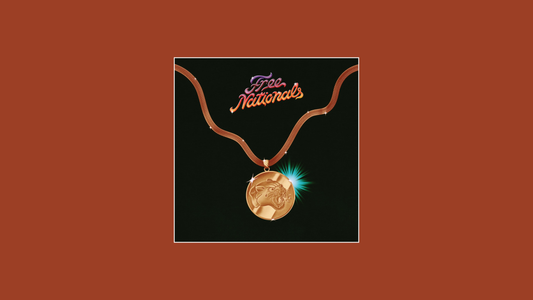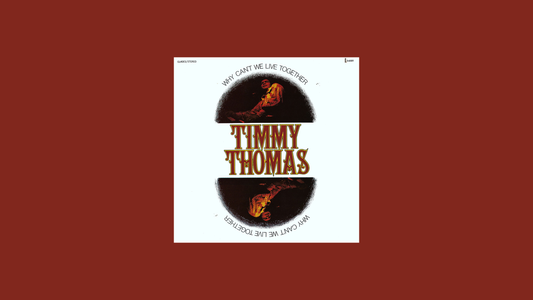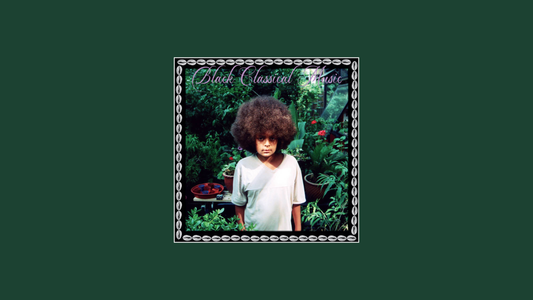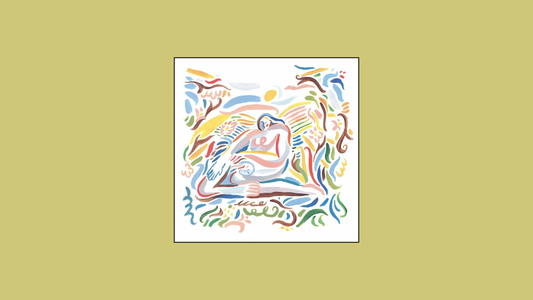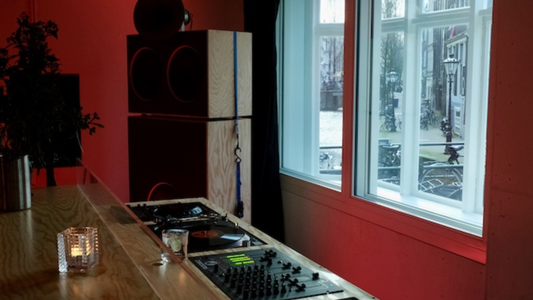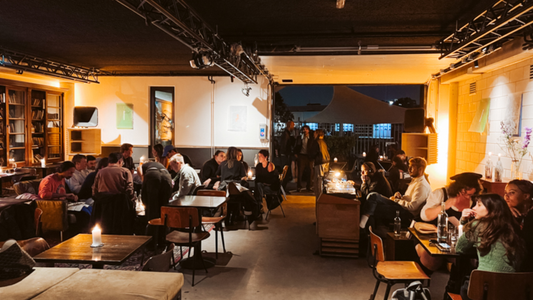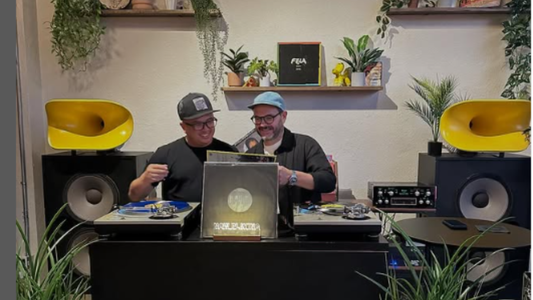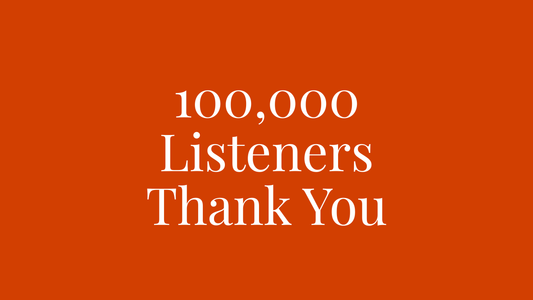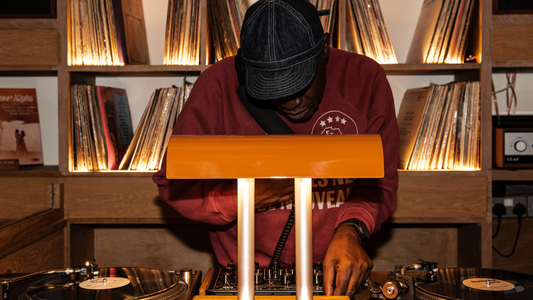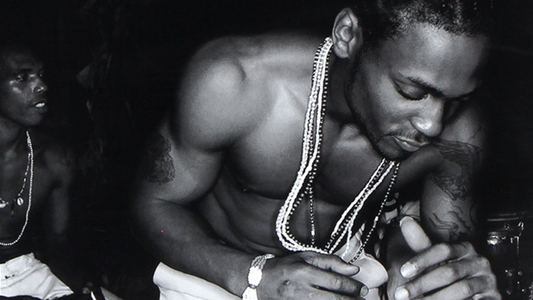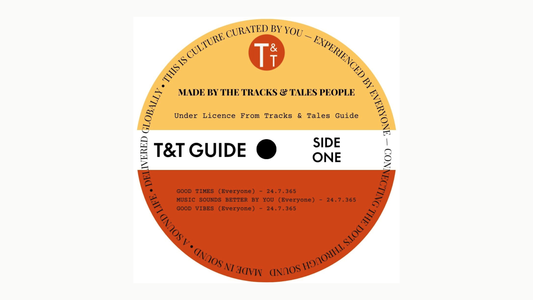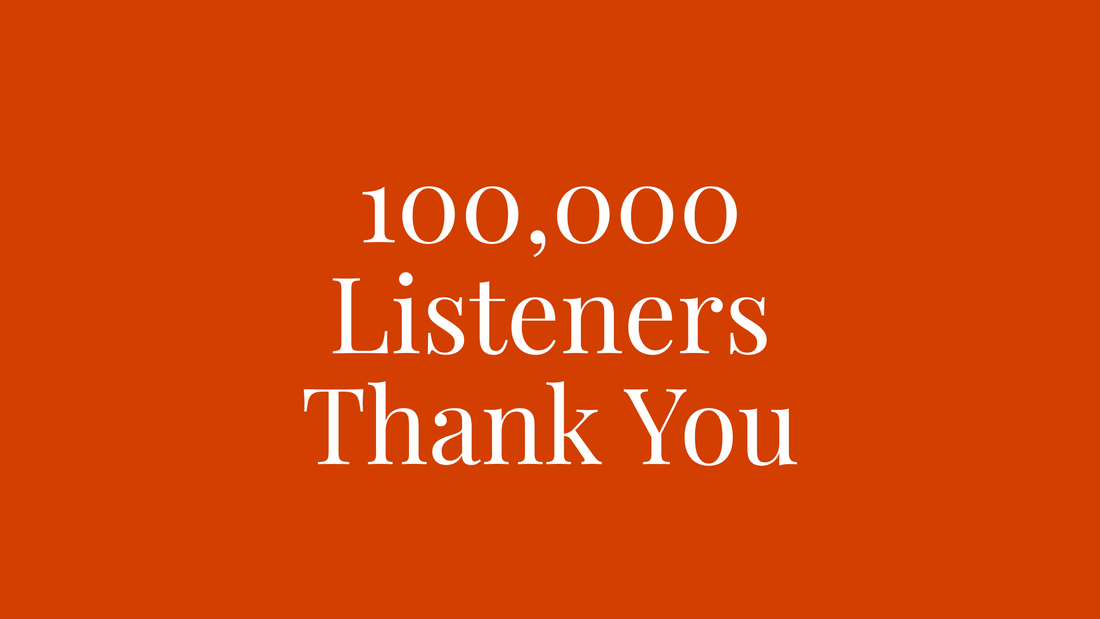
A Hundred Thousand Ears — A Public Thank You from Tracks & Tales
Tracks & Tales celebrates 100,000 Google impressions in 75 days.
By Rafi Mercer & Amelia Fairfax
Seventy-five days
That’s all it has been since we pressed play on Tracks & Tales. Yet somehow, across 85 countries and 1,036 cities, over 100,000 people have found us — or perhaps more precisely, they’ve heard us. One hundred thousand impressions, eleven thousand page views, and a few thousand listeners who have begun to form something new: a quiet global culture of attention.
It started as an experiment. A digital journal for those who still listen slowly. We believed that if you built a home for listening — one that honoured the architecture of sound and the intimacy of human presence — the world might find it, one click and one breath at a time. It’s humbling to see that hunch proved right.
We owe this to everyone who paused long enough to read, to share, to whisper a venue name into a comment box, to send a message saying, “I didn’t know anyone else cared about this too.” Because this is what Tracks & Tales was always meant to be: proof that listening still matters.
The story of these first seventy-five days is simple enough to tell, but it carries a deeper meaning. It’s about how you build culture in public — one listening room, one word, one return visit at a time.
We began with a single page: Tokyo. A map, a rhythm, a philosophy in motion. Tokyo’s listening bars became our prototype — the model for how a city could be written as sound. We didn’t chase perfection. We chased resonance. Every link, every venue, every verified name existed to help readers feel a little closer to the culture that inspired it.
From there came Shinjuku and Minato, each a small act of curation, building a living atlas that grew in real time. We built fast, then refined. We trusted that clarity and honesty would do the work that hype never could.
Each new city taught us something. That the quiet rooms of London sound different to the backstreets of Osaka. That what binds them isn’t design, or money, or fashion — it’s the shared belief that listening is a luxury we can all afford.
When we wrote those early essays — about Coltrane, Nina Simone, Bill Evans, DJ Shadow — we realised they were all part of the same recipe. Every venue, every artist, every bottle poured at a counter somewhere was another ingredient in the global listening culture. The stories became our foundation: long-form notes written in the slow confidence of people who have lived inside music for a lifetime.
Our approach was deliberate. Build the architecture first — the atlas, the venues, the cities — and let the beauty follow. SEO, structure, and sound all served the same idea: to create a digital home that feels human. You can browse by city, by sound, by mood, and what you find is not a database, but a feeling — that you’re part of something unfolding.
We published daily, not because we were chasing metrics, but because rhythm matters. The web, like music, trusts those who keep time. Tracks & Tales Daily became our metronome: reflections, essays, and thoughts shared in the open, always returning to the same note — that listening is design, defiance, and care.
It hasn’t all been elegant. We worked at dawn, at night, between other lives. Amelia brought the texture — the fabric and movement of culture, the way people dress to listen, the social rhythm that lives between the beats. I brought the sound — the geometry, the weight, the resonance of rooms. Between us, we built something that feels lived-in.
The first 75 days have been a crash course in scale. We’ve learned that search doesn’t reward noise, it rewards consistency. That readers don’t crave perfection, they crave presence. And that when you write for the world, you must write as if you’re speaking to one person, softly.
Each click, each impression, each country has felt like a quiet signal back — proof that this language of listening transcends geography. From São Paulo to Seoul, from Marrakesh to Manchester, people are searching for a way to slow down and hear again. The world, it seems, is ready to listen.
There are five steps we can now see clearly, looking back.
- The first was to name the north star — to decide what we were truly building. Tracks & Tales was never a magazine. It was a map, a movement, a living archive of sound and place. By calling it an atlas, we gave it a shape the world could understand. By keeping it human, we gave it a soul.
- The second was to build the atlas before the gloss. Too often people wait to polish before they publish. We did the opposite. We launched early, made it real, and improved in public. That honesty made it trustworthy.
- The third was to speak in rhythm. We published daily, in small, precise pulses, because the web rewards heartbeat. Each new piece — from venue dossiers to short reflections — fed into a larger musicality of content. The site began to breathe.
- The fourth was to invite belonging, not followers. The people who come here aren’t an audience — they’re participants. They send us tips, share new listening bars, and write with affection. The moment we stopped broadcasting and started conversing, everything changed.
- And finally, the fifth step: keep every link alive. SEO, at its core, is a promise — that when someone searches for something, they’ll find a door that opens. Every link on this site leads somewhere genuine. No loops, no dead ends. Just more listening.
These might sound like tactics, but they’re really values. Because what’s been built here isn’t just an online guide — it’s an act of optimism. In a world that scrolls faster every day, Tracks & Tales insists on slowing down. It celebrates stillness as rebellion, and listening as design.
Amelia always says that style and sound are cousins — that the way we move, dress, and gather are part of the same language. She’s right. The people we meet through this project — whether standing at a bar in Tokyo, dancing in Berlin, or sipping whisky in London — are united by an unspoken elegance. They know how to be still without being static. They understand that attention is the truest form of taste.
I think often about the first time I heard Kind of Blue played on a pair of Beolabs in a darkened room. That moment was the seed for all this — the belief that listening, done properly, could be an art form. That same belief now travels through every page, every playlist, every whispered conversation we have about where to go next.
One hundred thousand impressions in seventy-five days is a line in the sand, yes. But it’s also a mirror. It reflects what’s possible when you build something from conviction rather than convention. We didn’t advertise. We didn’t chase virality. We built quietly, respectfully, and let people discover it on their own terms.
The results have been organic, which is exactly how they should be. Growth by resonance, not reach. Because what we’re building isn’t just a website. It’s a movement toward a slower internet — one that rewards curiosity over clickbait, and care over speed.
We can already feel what’s coming. Next year, we expect not just one hundred thousand eyes, but one to five million ears — people who come for the sound, stay for the stories, and leave with a deeper sense of calm. The growth is exciting, yes, but the real success will be measured in meaning. If we can help even a fraction of those visitors rediscover the pleasure of listening — really listening — then we’ve done our job.
We write this this morning as both a thank you and a promise. To everyone who has been part of these first seventy-five days — you are the start of something. Every city, every venue, every record added to this guide is another step toward a more connected, more attentive world.
We’ll keep building the atlas — city by city, sound by sound — until there’s a map of the world built entirely from places where music still matters.
If you’ve been with us from the start, thank you. If you’ve just arrived, welcome. You can explore the Tokyo hub to see where it began, or wander through Shinjuku and Minato to feel the heartbeat of the listening bar movement. You can find more essays by searching Rafi Mercer, or simply subscribe to join the Guide and help us build what comes next.
This milestone isn’t the end of a chapter — it’s the overture to everything ahead.
The world is beginning to listen.
Let’s make sure we give it something worth hearing.
— Rafi Mercer & Amelia Fairfax
P.S For venue submissions, collaborations, or press enquiries, please get in touch here.
